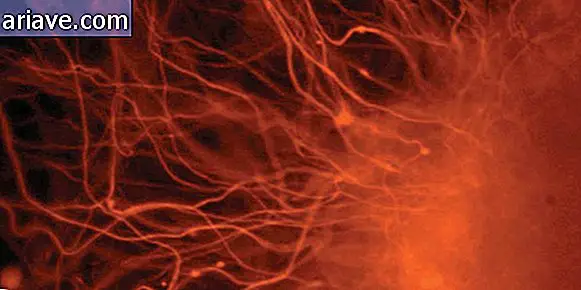Find out who is living in your hair and eyelashes right now
As you know, our bodies are true walking biomes that serve as a “home” for countless species of fungi, bacteria, viruses, and other animals, all coexisting in relative harmony. Luckily, the vast majority of these beings are invisible to the naked eye, so that means that - under normal conditions - we don't even realize their presence.
By the way, thankfully we can't even see these creatures, as many of them have simply horrifying appearances, not to mention that although they are common and exist in the bodies of everyone, they are very disgusting!
Examples of these beings are Demodex brevis and Demodex folliculorum - which we already talked about here in Mega Curioso - two species of mites that live only on humans, especially on the scalp, face and upper chest.
Demodex folliculorum

Demodex folliculorum - the nasty-looking monster in the image above - has a predilection for hair follicles and usually "meets" with friends in the eyelashes. In fact, as you can see in the following photo, they congregate in the follicular pores and those yellow balls are their projecting ends. Ew!

Look from another angle, where the yellow column surrounded by smaller structures is actually a strand of hair, and the green mounds that appear next to it are the tails of the Demodex :

Demodex brevis
Demodex brevis, on the other hand, reproduces in the sebaceous glands attached to the hair follicles, and although it does not look very different from D. folliculorum, it is usually less “sociable” and prefers to occupy the sebaceous glands alone. Check out:

But don't worry, because both Demodex brevis and Demodex folliculorum are tiny - they are less than 0.4 millimeters long, and D. brevis is usually a little smaller than D. folliculorum - and their elongated little bodies. They are transparent. Moreover, these mites do not live long: their life cycle, that is, since they leave their eggs and turn from larva to adult, lasts only between 14 and 18 days.

These two monsters feed on dead cells and do not usually cause major problems unless the "population" of these organisms becomes very large. In this case, there is a debate among dermatologists about whether D. folliculorum and D. brevis cause some skin problems, such as rosacea - characterized by reddish patches and inflammation of vascular tissue - and blepharitis, an inflammation of the eyelids.











